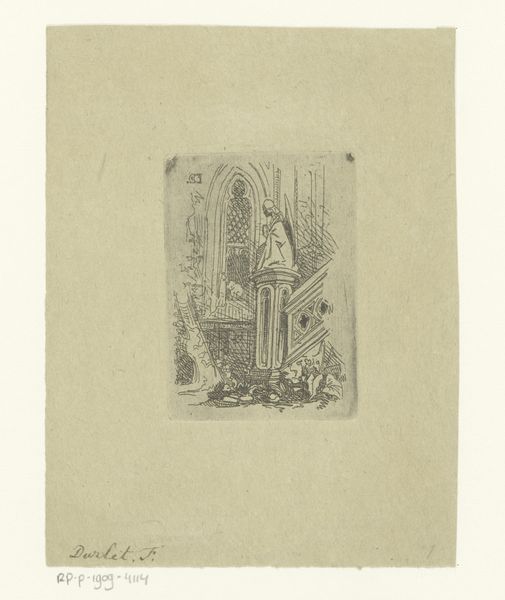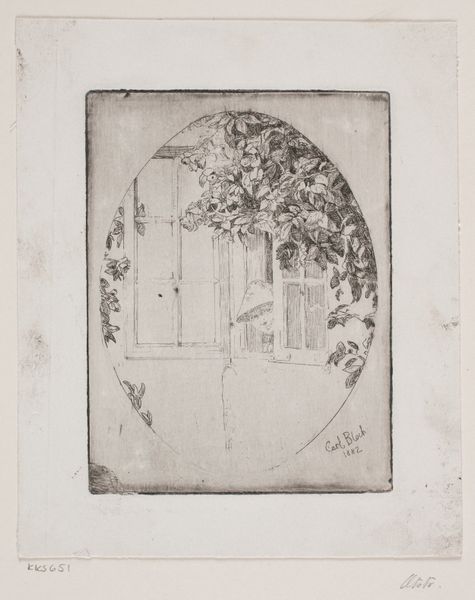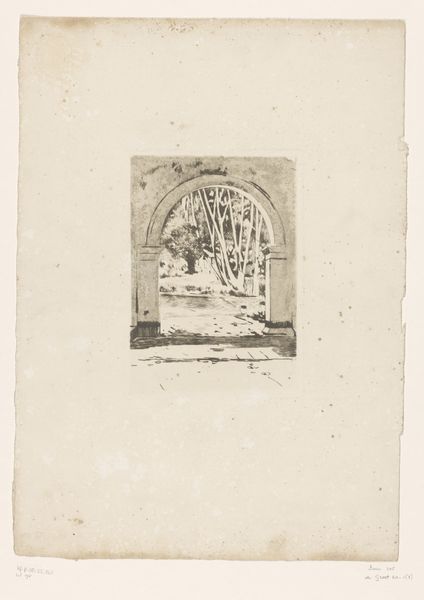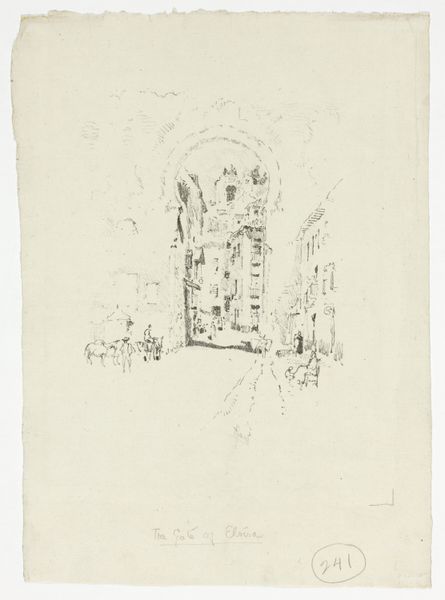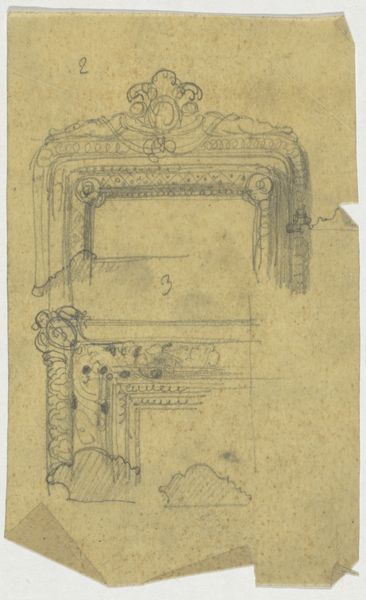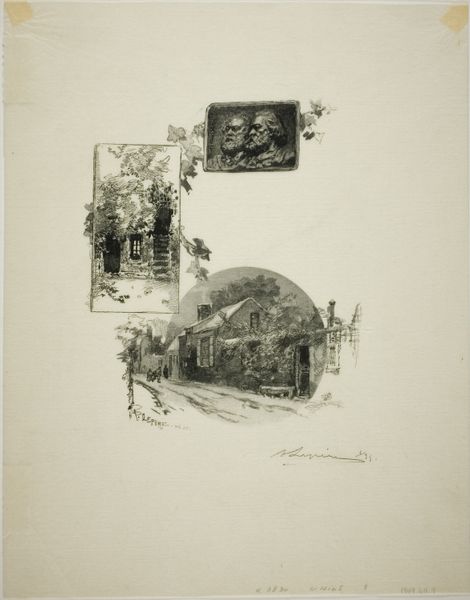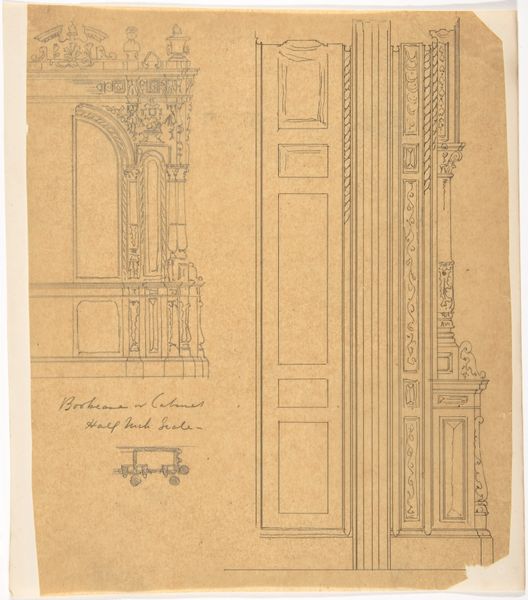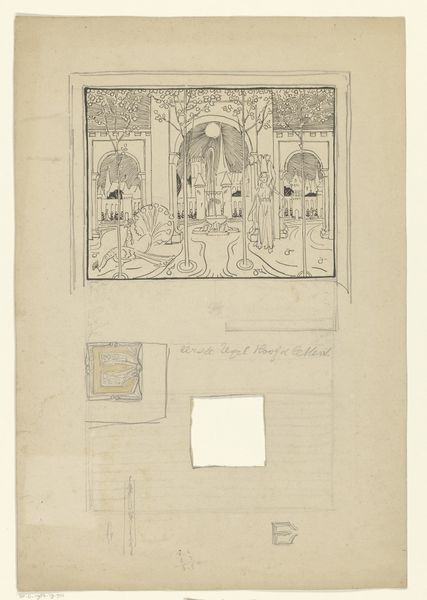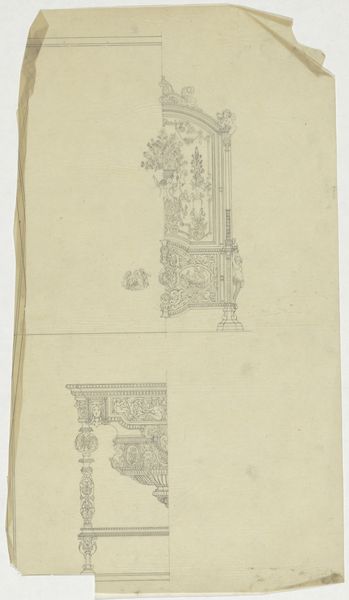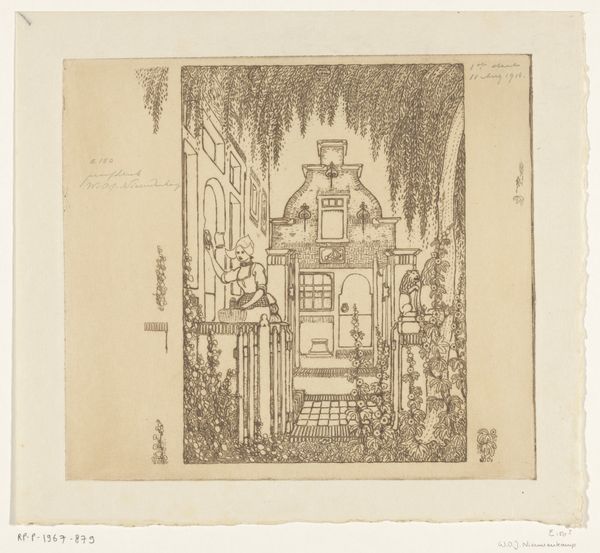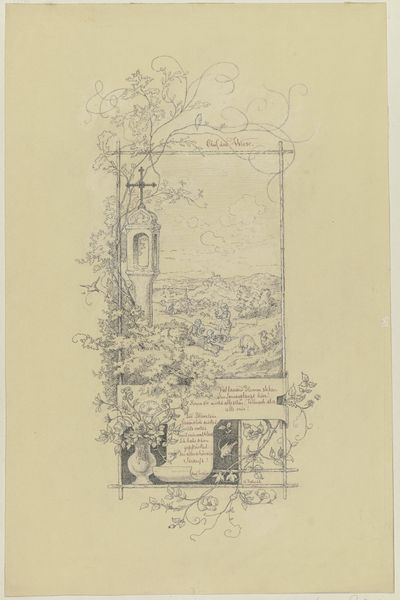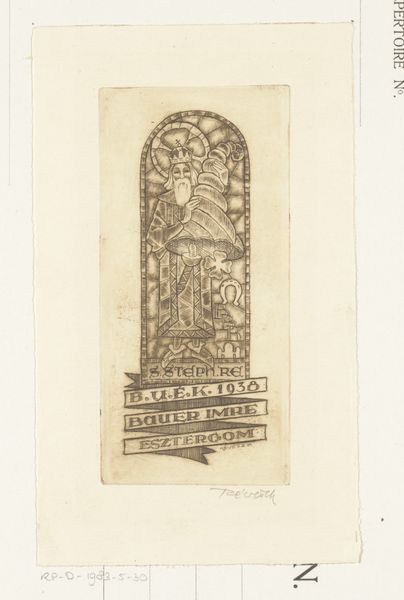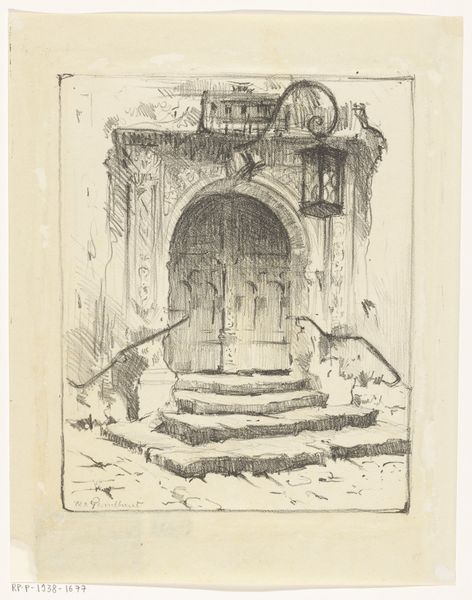
drawing, print, paper, ink
#
drawing
# print
#
paper
#
ink
#
cityscape
#
academic-art
Dimensions: image (irregular): 13.97 × 9.53 cm (5 1/2 × 3 3/4 in.) sheet: 17.78 × 13.34 cm (7 × 5 1/4 in.) board: 16.51 cm (6 1/2 in.)
Copyright: National Gallery of Art: CC0 1.0
Editor: This is James Henry Moser’s “History of the Corcoran Gallery of Art,” made with ink on paper around 1890. It gives me a glimpse into what art was like back then with its traditional cityscape. As someone learning about art, how would you interpret this piece in relation to the social or cultural context of the time? Curator: Well, considering its time, this piece appears to be doing some institution building through image making. The Corcoran, like many galleries then and now, aimed to cultivate a particular kind of civic identity. Notice the academic style, which reflects the established artistic values of the era. How do you think the image portrays the museum's role in society? Editor: I suppose it shows the museum as something grand and important, part of the cultural landscape and not just a place to see art. Maybe the person in the doorway represents the public being welcomed inside? Curator: Precisely. The architectural detail lends the museum authority and a sense of permanence, but it's more than just aesthetic appreciation. It's an assertion of the museum’s role in shaping cultural narratives. The deliberate classical style and meticulous detail is also working on an idealized version of the American project and the values it espouses. It evokes ideas of progress and refinement. Editor: That’s insightful. I never considered that institutions would portray themselves in particular ways through art. Is that common? Curator: Absolutely. This kind of artistic patronage and self-representation shapes public opinion, reinforces power structures, and plays an essential role in the public's perception of cultural value. This image really invites us to consider who gets to write history and whose stories are considered worthy of preservation. Editor: I see. It makes me think about what stories our cultural institutions are telling today. I’ve definitely learned something new. Curator: Likewise, thinking about how artworks actively construct institutional identity remains profoundly relevant today.
Comments
No comments
Be the first to comment and join the conversation on the ultimate creative platform.
